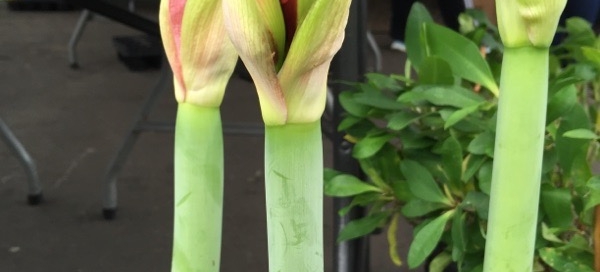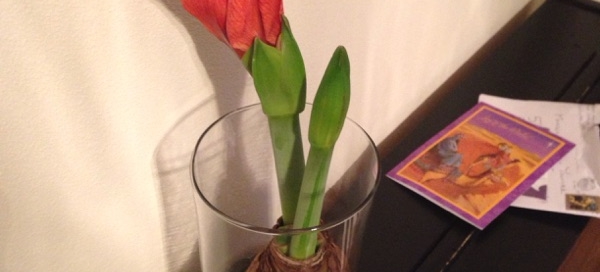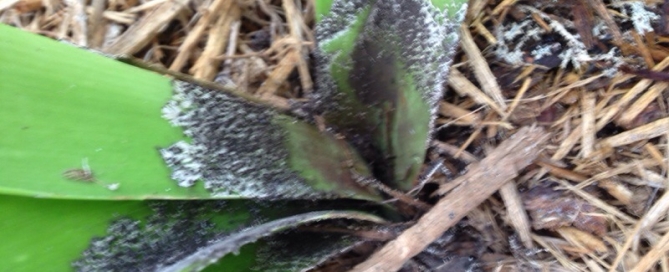Amaryllis Bulb
This is an Amaryllis which is really in the genus Hippeastrum. In northern climates it is a popular bulb that is sold before the holidays and forced into bloom indoors at Christmas and during the winter to early spring months. Keep the plant in a bright to sunny location while it's flowering and be sure that the soil isn't kept too soggy-wet because this can rot the bulb. Water it well when dry but don't let the pot sit in water that collects in gift-wrap foil or a saucer.
If you'd like to keep this bulb alive to bloom again next year, it isn't difficult, but you must do the following:
1. After flowering stops, clip off the spent flower but leave the stem as long as it's green. Cut it down when it turns yellow. Keep the plant in a sunny window, and begin to fertilize using either a time-release product or a liquid feed according to directions. Sometimes these bulbs put up another flower spike, but they usually just produce leaves at this point.
2. Transplant into a slightly larger, clay pot so the plant can be put outside once all danger of frost is past. Use good quality potting soil and don't cover the drainage hole or put anything but soil in the bottom of the pot.
3. Place the plant out in morning sun and afternoon shade for the summer and water when the soil looks dry. Continue to fertilize or apply a time-release fertilizer every two months.
4. In the fall leave the plant outside as it gets cooler but when frost is forecast or seems likely bring the plant into a cool, dark location and stop watering. The combination of the cool temperature and the dark will give the bulb a resting period. Cut off any dried leaves after they wilt.
5. After six or more weeks you can bring the pot into the house and place it in a warm, sunny location again. Start to water and begin the process all over again.
6. Repot every two years or when needed as the bulb begins to make new bulblets to the sides.
Enjoy!


